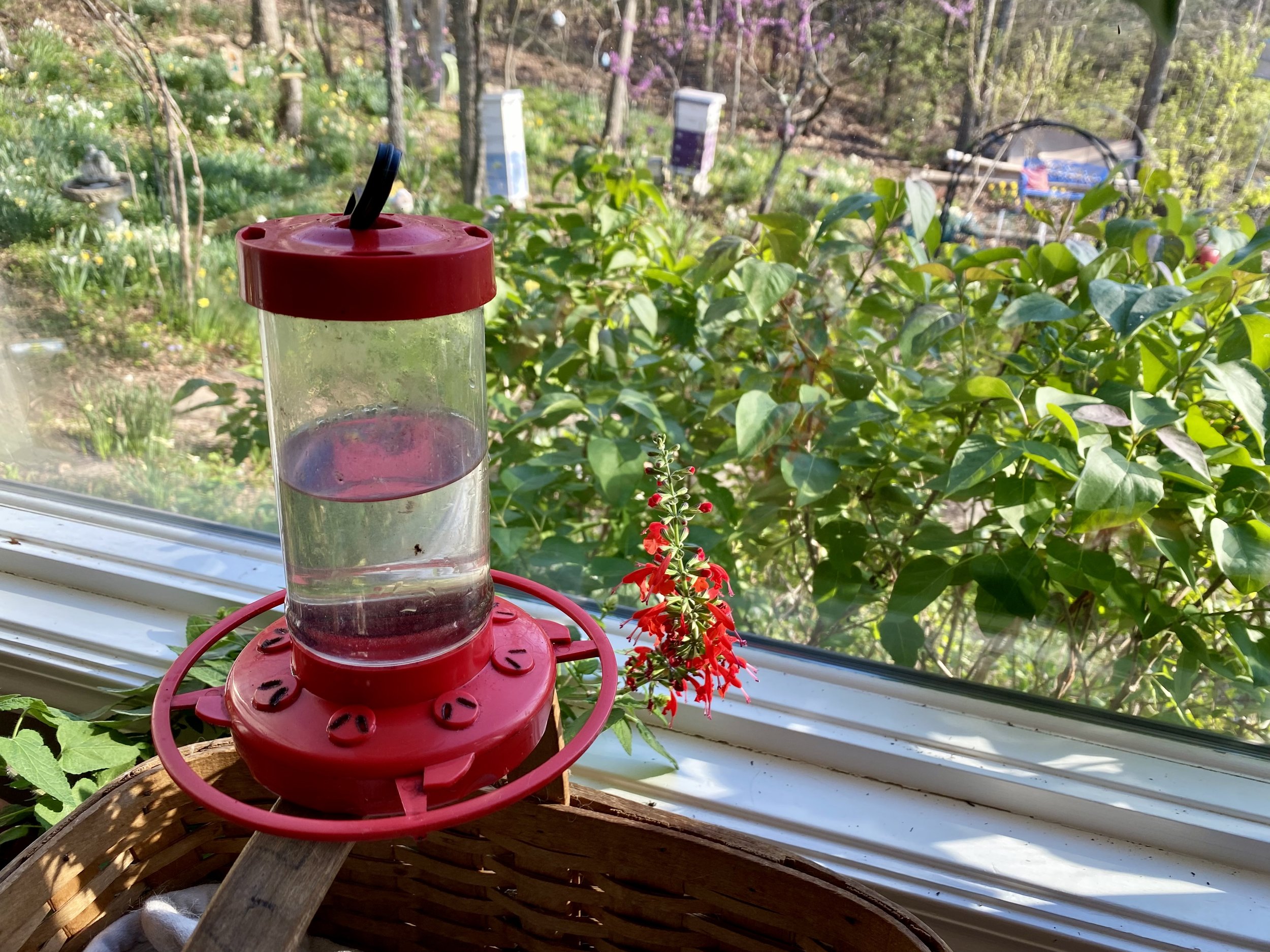Welcome Back, Hummingbirds
/Welcome Back, Hummingbirds!
It’s about time to welcome these lovely pollinators back to our garden from their South American wintering grounds. Most people just set out a hummingbird feeder but there are other steps you can take:
Provide a Food Source: Plant a variety of nectar-rich flowers that bloom at different times throughout the year. Hummingbirds are attracted to brightly colored tubular flowers such as trumpet vine, bee balm, salvia, and penstemon in reds, fuchsia and pink colors.
Install Hummingbird Feeders: Supplement natural nectar sources with hummingbird feeders filled with a mixture of water and sugar. The Audubon Society updated the hummingbird sugar recipe from 1 part sugar to 4 parts water to 1 part sugar and 3 parts water. No need to add red dye.
Keep the feeders clean and change the nectar every 3-4 days, especially in hot weather, to prevent fermentation and mold growth.Offer Protein Sources: Hummingbirds also need protein in their diet for energy. In addition to nectar, they consume small insects and spiders.
Encourage insect activity in your garden by minimizing pesticide use and providing habitat for beneficial insects.Create Nesting Sites: Hummingbirds build small cup-shaped nests using plant fibers, spider silk, and other soft materials.
Hang thin branches or place nesting materials like cotton or pet fur in your garden to provide building materials for hummingbirds.Provide Shelter and Perches: Hummingbirds need places to rest and shelter from predators.
Plant trees and shrubs with dense foliage or provide trellises and hanging baskets for perching and nesting.Keep Water Sources Clean: Hummingbirds need clean water for drinking and bathing. Install a shallow bird bath with gently sloping edges, or mist foliage with a fine spray to create tiny droplets for hummingbirds to bathe in.
Choose Native Plants: Native plants are adapted to your local climate and provide the best food and habitat for native wildlife, including hummingbirds. Research native hummingbird-friendly plants in your area and incorporate them into your garden such as wild columbine.
Avoid Chemicals: Pesticides, herbicides, and chemical fertilizers can harm hummingbirds and their food sources.
Choose organic gardening methods and natural pest control solutions to create a safe environment for hummingbirds.Be Patient and Observant: It may take some time for hummingbirds to discover your garden, so be patient. The scouts will locate your hummingbird feeder and let the others know where it is located. As you add more things to attract the hummers, they will settle in to spend the summer with you.
I have several that spend the North American summer in my garden. They are territorial and may chose others away; then you know they are claiming your garden as theirs!
For more gardening, beekeeping, cooking and easy home decor tips, subscribe to Garden Notes.
Charlotte












